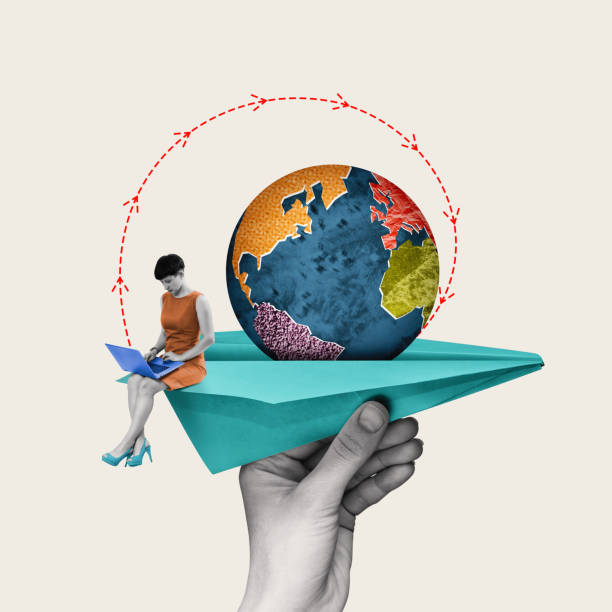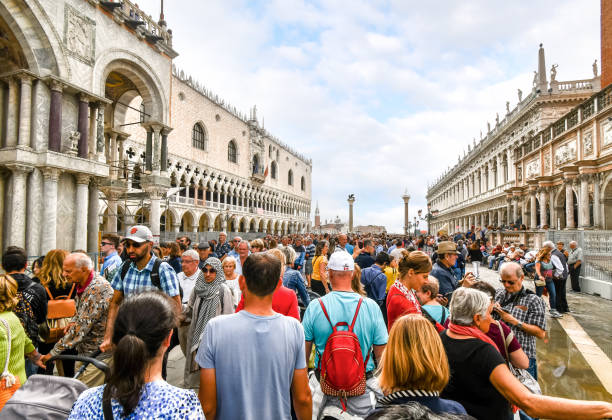In recent years, more and more travelers are rethinking how they explore the world, and one of the most significant shifts is away from air travel. As the environmental impact of flying becomes clearer, with aviation contributing to over 2% of global CO2 emissions, many are seeking alternative ways to travel that are not only sustainable but also immersive and adventurous. The good news is that there are numerous ways to explore the globe without setting foot on a plane. From scenic train journeys and picturesque boat cruises to long-distance buses, these alternative modes of transport offer a slower, more intentional way to travel—while reducing your carbon footprint.
In this guide, we’ll explore how you can explore the world without flying, offering tips, itineraries, and environmental benefits of rail, boat, and bus travel. Whether you’re planning a European adventure, a Southeast Asian getaway, or a cross-country road trip, there’s no shortage of exciting and sustainable travel options.
1. The Environmental Impact of Air Travel: Why Consider Alternatives?
Flying is convenient, but it’s also one of the least sustainable ways to travel. According to the International Air Transport Association (IATA), aviation accounts for about 2.5% of global CO2 emissions, and flying remains a major contributor to climate change. The carbon footprint of a single long-haul flight can outweigh that of many other daily activities combined, including driving or heating your home.
As climate change becomes an increasingly urgent issue, many travelers are seeking ways to reduce their impact on the environment. Choosing trains, buses, and boats over flying is a great way to travel sustainably, while still having rich and rewarding experiences. Not only does this approach reduce emissions, but it also encourages more mindful, relaxed travel.
2. Sustainable Ways to Travel: Alternative Modes of Transport
By Train: Explore the Beauty of Rail Travel
Train travel is one of the most eco-friendly alternatives to flying. Trains produce significantly lower emissions per passenger compared to planes and cars, especially in regions where the rail networks are powered by renewable energy sources. Plus, rail travel offers stunning landscapes, the chance to meet locals, and an overall more scenic, immersive experience.
Where to Travel by Train:
- Europe: Europe’s rail network is one of the most extensive and efficient in the world, with high-speed trains that connect cities and regions in a matter of hours. From the Eurostar between London and Paris to the scenic Glacier Express in Switzerland, Europe’s trains provide quick, affordable, and environmentally friendly ways to travel. Sample Itinerary: Europe by Train
- Day 1-2: Start in Paris, travel to Brussels (1.5 hrs), explore the city for a day.
- Day 3-4: Take the Thalys train to Amsterdam (2 hrs), spend two days enjoying the canals and museums.
- Day 5-7: Hop on a direct train to Berlin (6 hrs), and explore the city’s rich history.
- Day 8-10: Take the scenic ICE trains through Germany to Zurich (8 hrs), then embark on the Glacier Express to St. Moritz for breathtaking views of the Alps.
- Japan: Japan’s shinkansen (bullet trains) are known for their speed, punctuality, and efficiency. Traveling from Tokyo to Kyoto by bullet train takes about 2.5 hours and offers a smooth and scenic journey. Japan’s well-connected rail network makes it easy to travel between major cities and regions without the need for flights.
- Canada: The VIA Rail system connects major cities like Toronto, Montreal, and Vancouver, but it also offers scenic long-haul routes such as the Canadian train between Toronto and Vancouver, which takes four days and offers some of the most stunning landscapes in North America.
- India: India’s rail network is massive, and some of the most scenic train journeys in the world can be found here, such as the Palace on Wheels and the Darjeeling Himalayan Railway. Train travel is often affordable and offers travelers a unique way to experience the country’s culture.
Why it’s Sustainable:
Trains are often the greenest option, especially in regions that invest in renewable energy. They have a lower per-passenger carbon footprint, especially when compared to air travel.
By Boat: Waterways as Travel Paths
Traveling by boat might sound like something from the past, but in many parts of the world, it remains a key mode of transport—and one that’s surprisingly sustainable. While larger cruise ships may have a significant environmental footprint, smaller boats, ferries, and river cruises are a great way to explore coastal areas, islands, and rivers with minimal impact.
Where to Travel by Boat:
- Southeast Asia: Southeast Asia is a haven for boat travel, with numerous boat routes connecting islands, coastal cities, and regions. You can travel by ferry or boat between islands in Indonesia (e.g., Bali to Lombok), Thailand (e.g., Phuket to Koh Samui), and Vietnam (e.g., Halong Bay tours). Many of these routes are operated on small, eco-friendly boats, which make them a more sustainable choice than flying.
- Norway: Norway’s fjords are famous for their stunning beauty, and the best way to experience them is by boat. The Hurtigruten coastal ferry service runs along Norway’s coast, from Bergen to Kirkenes, providing travelers with stunning views of the Arctic Circle. Norway also has several passenger ferries that connect its islands, offering another sustainable way to get around.
- The Mediterranean: Ferries and boats are a popular way to travel between the islands of Greece, Italy, and Spain, offering a scenic and eco-friendly alternative to flying. For example, you can take a ferry from Barcelona to Ibiza or from Venice to Croatia.
- Amazon River (South America): One of the most unique boat journeys in the world is traveling along the Amazon River. You can travel between Manaus in Brazil and small villages along the river by boat, immersing yourself in the heart of the rainforest.
Why it’s Sustainable:
Boats, particularly smaller ferries and eco-conscious vessels, generally have a lower environmental footprint than planes. Traveling by boat also offers a unique, leisurely way to enjoy coastal and island regions.
By Bus: The Road Less Traveled
Long-distance buses are often an underrated but sustainable alternative to flying. Buses emit significantly fewer carbon emissions per passenger compared to cars and planes, making them an eco-friendly option, especially on well-established routes. While bus travel can take longer than flying, it offers a chance to see the countryside and interact with locals in a way that flights simply don’t.
Where to Travel by Bus:
- Europe: Many cities across Europe are well-connected by bus, with companies like FlixBus and Eurolines offering extensive routes. Traveling from Berlin to Prague, for example, can be done in about 4.5 hours by bus, and you can also travel from Paris to London in under 8 hours by bus.
- USA: In the U.S., Greyhound and Megabus are major long-distance bus companies that connect cities across the country. Taking a bus from New York to Chicago can offer scenic views of the American countryside, and many buses are equipped with Wi-Fi, power outlets, and comfortable seating.
- Mexico: Bus travel in Mexico is extremely affordable, and services like ADO connect major cities like Mexico City, Cancun, and Oaxaca. Buses in Mexico are modern and often have amenities like reclining seats, air conditioning, and Wi-Fi.
- South America: In South America, buses are a great way to explore regions like Peru, Argentina, and Chile. For example, you can travel by bus from Lima to Cusco or from Buenos Aires to Mendoza, taking in the landscapes along the way.
Why it’s Sustainable:
Buses generally produce far fewer emissions than planes and are often a great way to travel on shorter distances. They also offer an opportunity to experience the local culture more directly, as you often interact with local passengers.
3. How to Make the Most of Non-Flying Travel
- Pack Light: One of the benefits of bus, train, or boat travel is the ability to enjoy a more relaxed journey. However, it’s important to pack light, especially for longer journeys, as space can be limited. Opt for versatile clothing and minimal luggage to ensure comfort during travel.
- Slow Travel: One of the biggest advantages of traveling without flying is the ability to embrace slow travel. With fewer time constraints, you can take your time exploring each destination, meet local people, and immerse yourself in the journey itself rather than rushing to get to the next place.
- Research and Plan: While alternative transport options are often more sustainable, they can sometimes be more complex or take longer than flying. Research your routes carefully, check schedules, and leave plenty of time for transfers between modes of transport.
- Carbon Offsetting: If you do need to fly for part of your journey, consider offsetting your carbon emissions by supporting reforestation projects or other carbon reduction initiatives.
Final Thoughts: Sustainable Travel for a Greener Future
As travel trends evolve and sustainability becomes a higher priority, non-flying travel options are becoming more popular. Whether you’re traveling by train, bus, or boat, these alternative modes of transport not only help reduce your carbon footprint but also provide a unique and immersive




